Blog 8 – Walking into Edinburgh and staying for a day 22/23 October 2021
Hope’s Walk
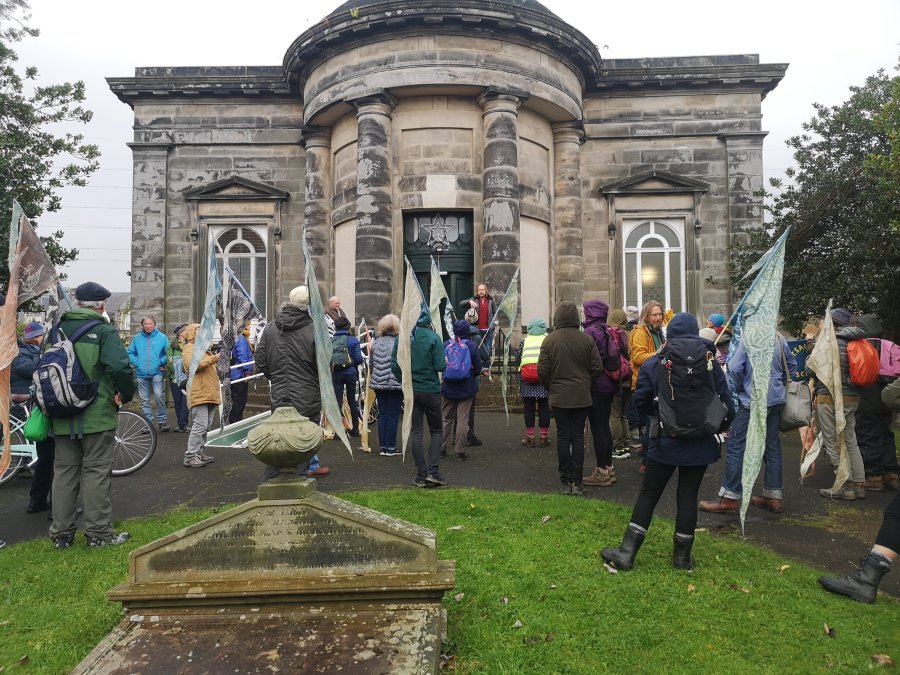
This morning’s route begins at St Marks Portobello where we had spent two nights (see blog 7 for details of the Portobello waystation), and we are joined by daily walkers. Jonathan Baxter who conceived of the Pilgrimage, Cath who is carrying the Stitches for Survival bag, and members of the YCCN (the Young Christian Climate Network, who made a grand relay from to Glasgow between June and October 2021) speak before we leave.
In years to come, we want to be able to look back and say “we did not sit at home while unjust decisions were made on our doorstep, we set sail towards a just future”.
YCCN website
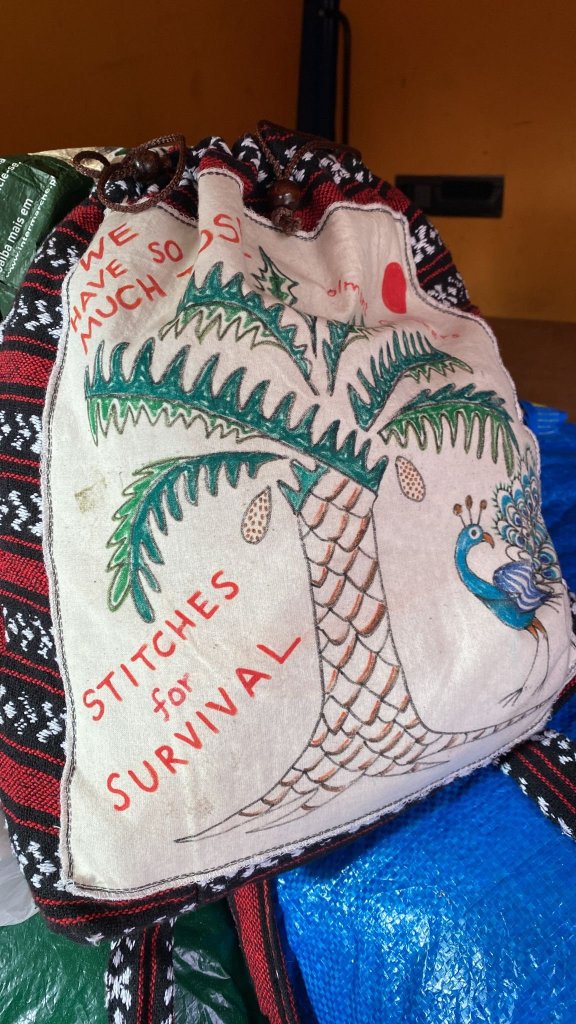
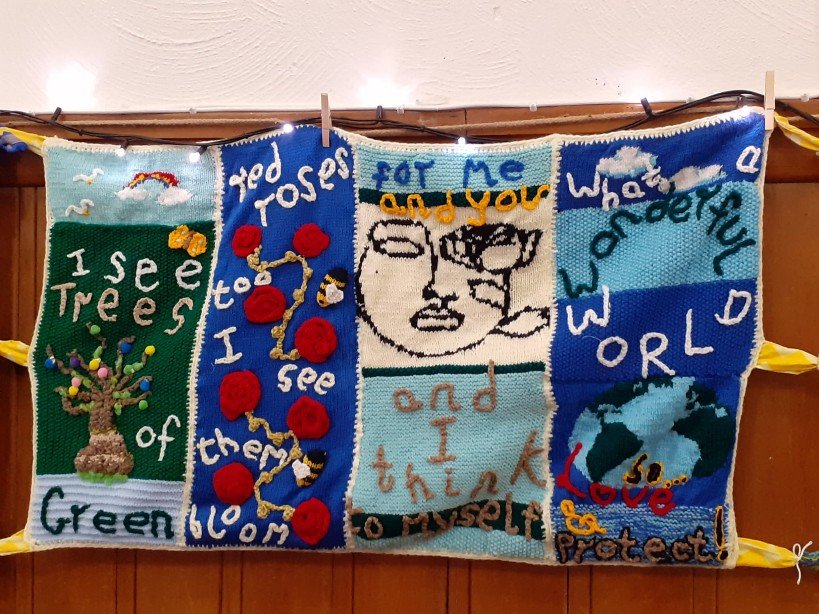
Hope
The theme that we come back to time and again on our pilgrimage is hope. On Sunday, Alistair McIntosh advised against despair, perhaps the corollary of hope, and advocated lamentation (see this earlier blog). Now, at the end of the first week of walking and learning together, we are making the Hopes Walk and on Sunday held a Deep Time, Wonder and Grief Circle in which hope and hopelessness were both expressed. In between these two events was a Silent Meditation on the Mound and an Interfaith Pilgrimage which visited Christian, Buddhist, Muslim and Hindu meeting places.
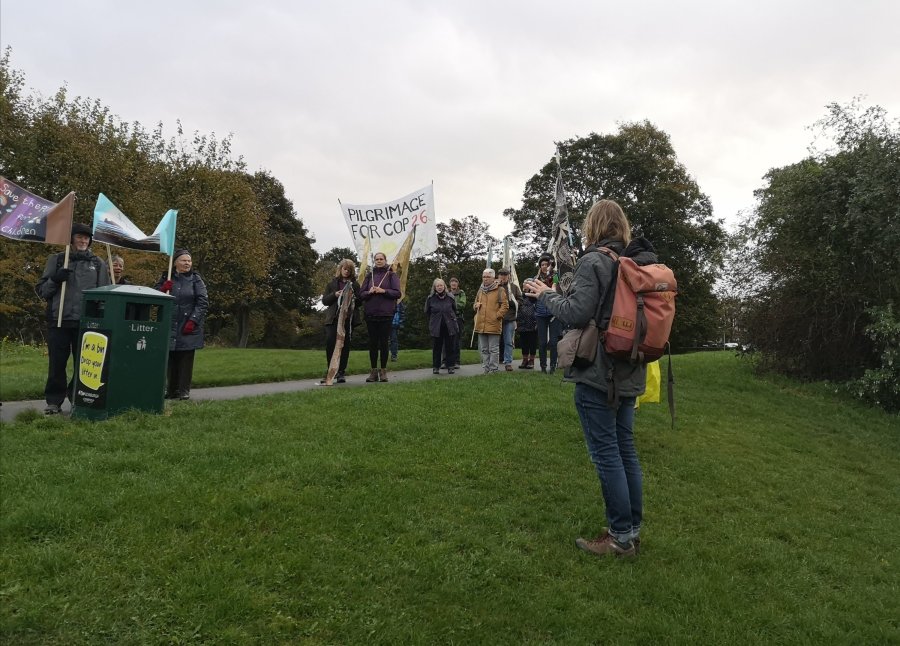
Walking itself is an act of hope – hope that the ground will be there the next time you depend on it, hope that you will be alive and able when your instinct is to step forward, hope that you will reach your destination and not die doing it. Every time the ball of your foot pushes off and the ground simultaneously launches you from itself, you sail through the air in the unspoken belief that you will land somewhere safe. Yes, walking is an act of faith; it is inherently hopeful.
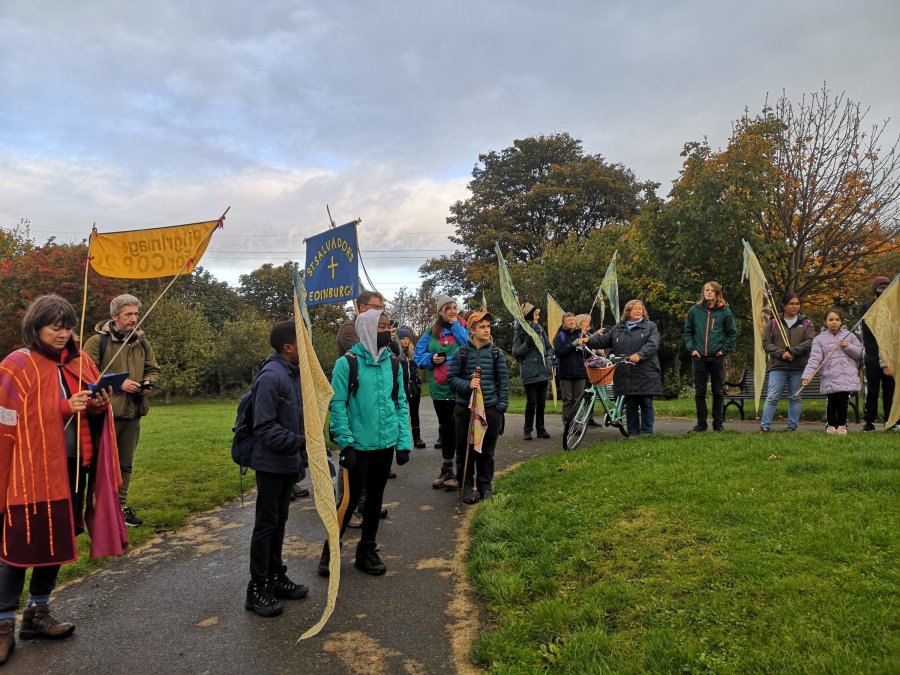
You may well ask:
What do we have to be hopeful about at this time of climate crisis?
…and it seems to me that it is this very act of walking together which is creating hope. If we all care enough to make the journey by taking this time out of our lives, putting up with sleeping on wooden floors and getting soaked in the rain; if we put aside our busy schedules and join up for a day’s march; if we bother to comment on blogs, toot our car horns when we see a group walking past with a banner – Pilgrimage for COP26 – and send messages of encouragement and solidarity, then it seems that the making of this pilgrimage, the doing of it is galvanising hearts and minds, educating and setting an example. This walk says, together we are moving, together we are doing something to bring about change.
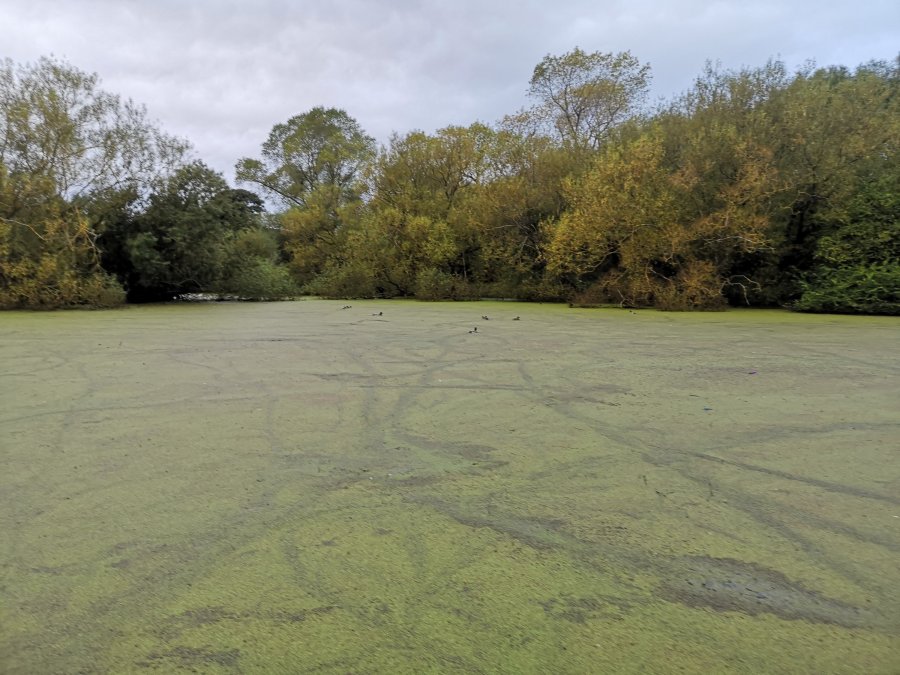
No, and neither is the water stagnant! The Friends of Figgate Park facebook page states that the covering is Duckweed, a fast growing, thin-layer of plants which grows in nutrient-rich water (much like algae does), especially in areas where lots of bread may be thrown in (despite the signs, duck-feeders still do this). It is not harmful, there are even some benefits: Waterfowl like Mallard Ducks and Moorhens absolutely love it, and the Mute Swans have been eating it too. As it’s such a thin layer it doesn’t impede them moving around (notice the trails in the photo above), can shelter small fish, and is possibly one of the reasons the latter seemed to do so well last year.
We know that species adapt, that people care enough to look after parks and ponds, and that plants respond ‘intelligently’. Here there is a balance between human and other-than-human (for want of a better collective term) and that gives me hope. The environment is finding ways to cope and now that more and more of us are determined to stop hindering it and start supporting, things are beginning to move in the right direction. Albeit slowly, I know.
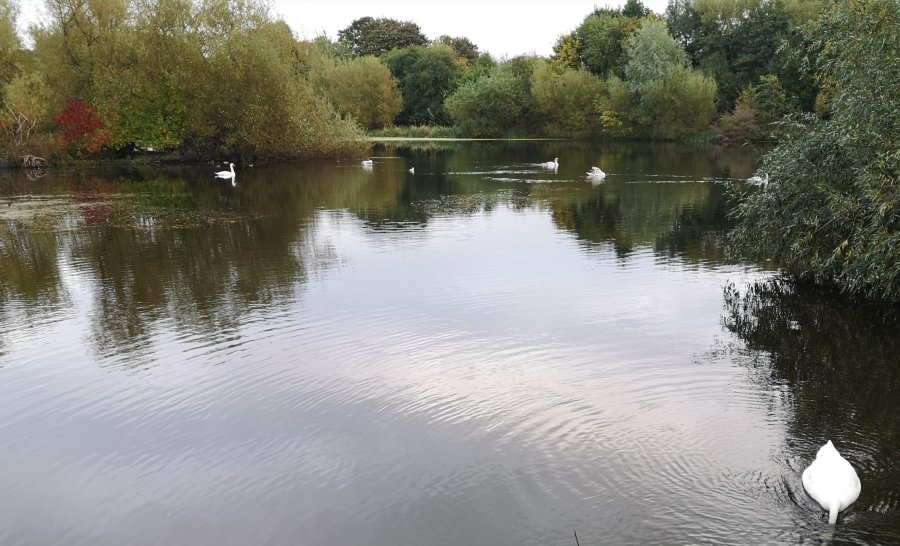
The Duckweed does mean that certain species such as Kingfishers can’t hunt, so they’ll be restricted to the burn elsewhere in the park, and the otters are less likely to visit, but if the fish are helped by the covering then next year we may well see more frequent appearances than this. There is a Grey Heron around, and it seems to be able to hunt despite the growth.
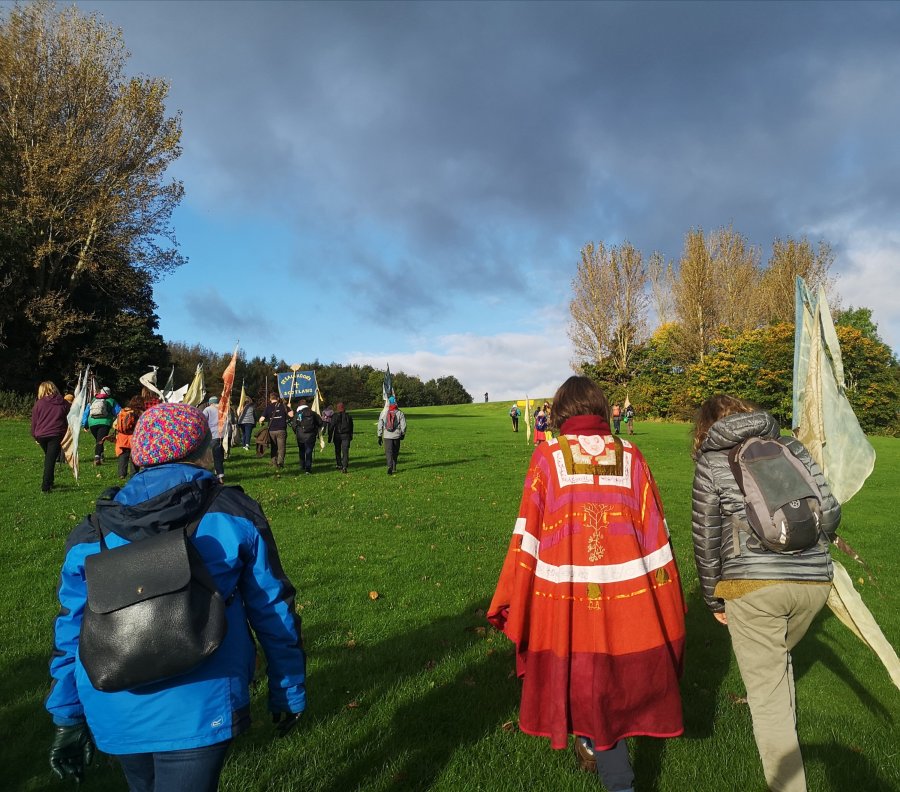
North Light Arts commissioned Natalie Taylor to make the cape, asking ‘Earth – is soil alive? It was coloured using natural dyes such as madder, grown by Kirsty Sutherland at the Granton Walled Garden. The hues of these dyes reflect the soils of Central Scotland that we are walking through and from which samples are being gifted to be stored in the inside pockets. Every aspect of the design has been considered, from the panels depicting a soil food web in which four of the world’s key crops are shown, to the almost-undecorated front indicating how between 30-40% of global soils are unusable for the cultivation of food, depleted of its nutrients. I was lucky enough to visit during the dying process and witness the huge cauldron of red-burgundy water heated over a burner with the good-witch stirring the blanket samples into it for hours.
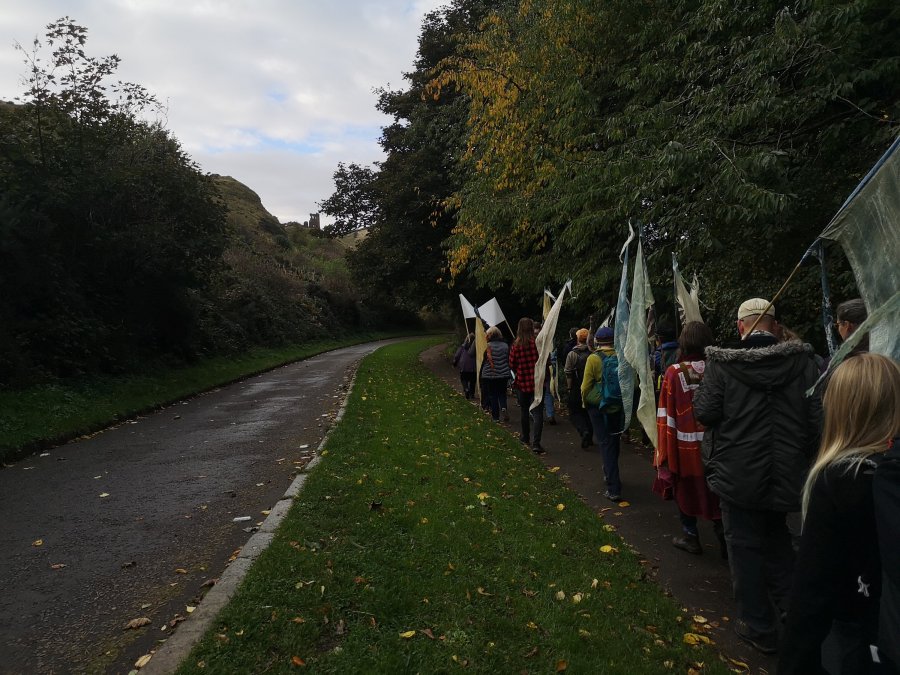
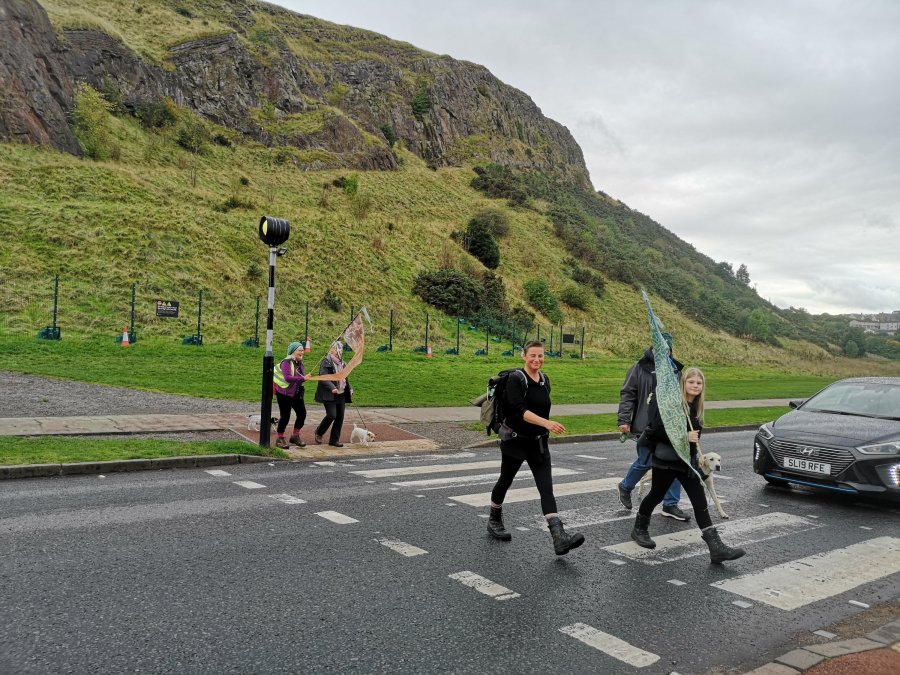
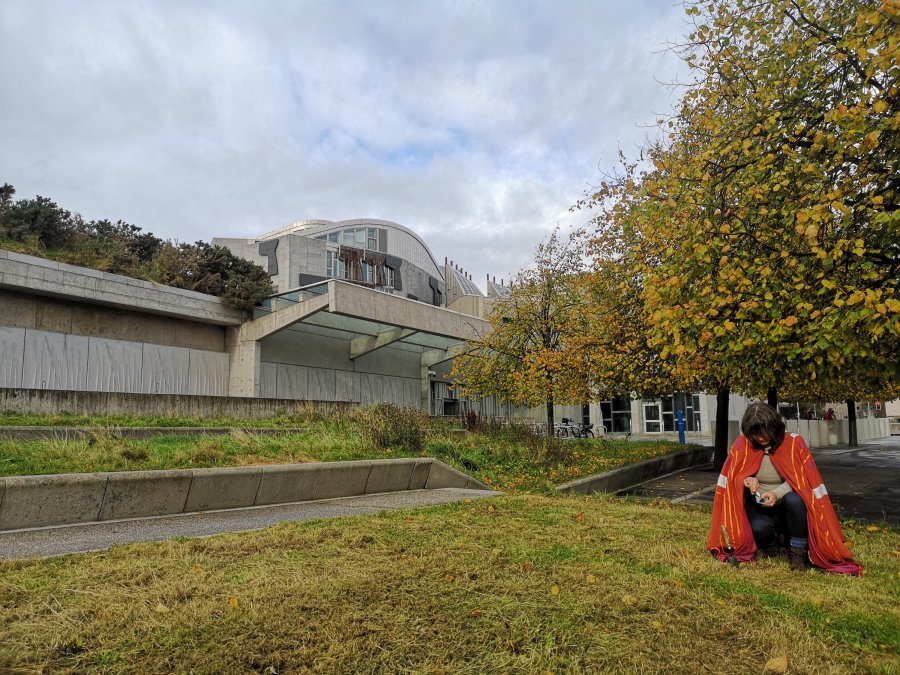
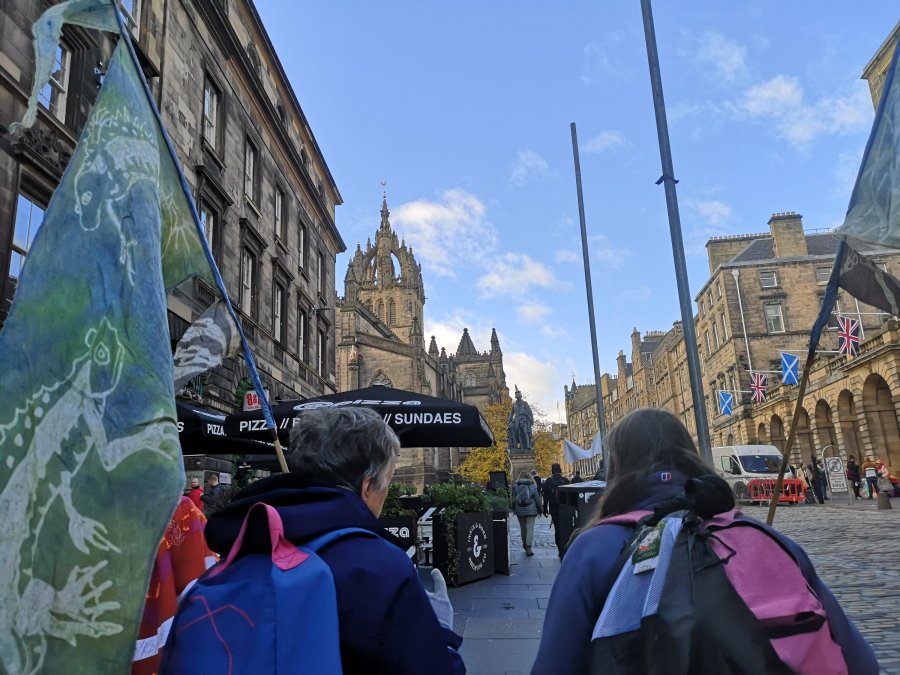
En route interpretation and peer-learning will be provided by an emerging community of peer-educators and cultural partners. These include arts and cultural organisations, interfaith communities, educational institutions, and grass roots community activists.
https://artandecology.earth/cultural-partners/
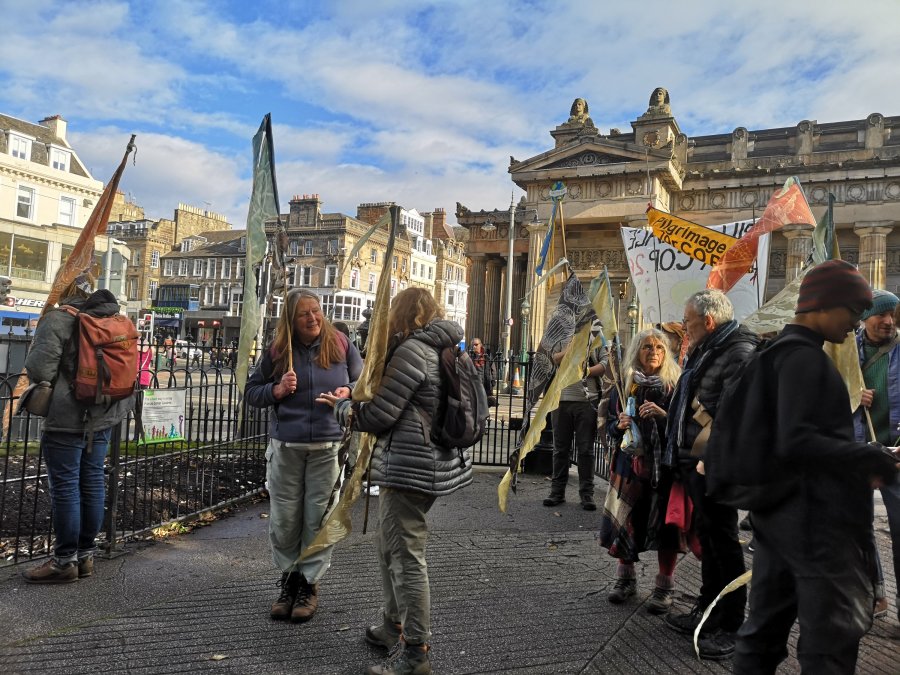
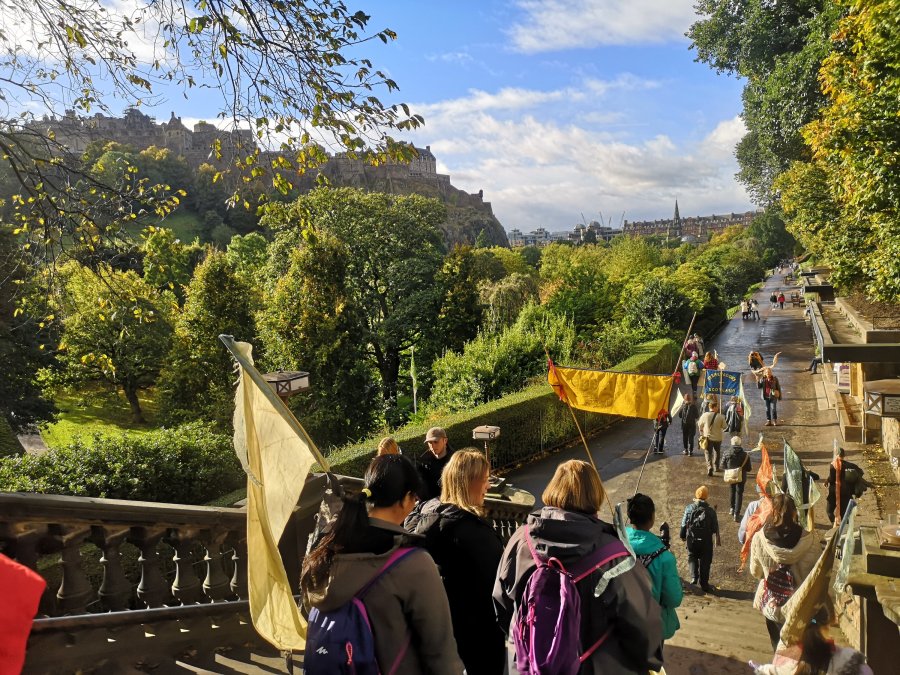
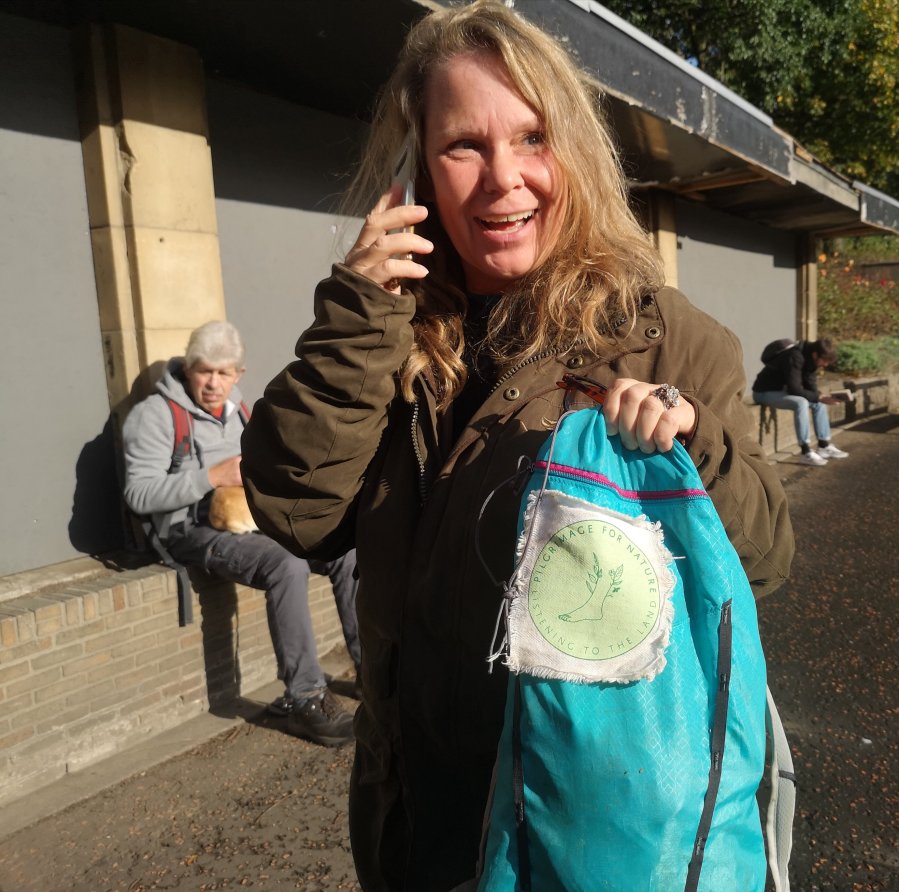
At this time of unique peril for our planet and all its inhabitants our plan is to deeply connect with and listen to the land we travel through, the species we encounter on the way and the communities living along the route. Our walk is a uniquely hopeful, creative and reverential kind of activism.
from the A & E website
There were a group of families (10 children and 10 adults) waiting to join us in Edinburgh. They had been hanging around for a long time, but the kids were well entertained.
Coat of Hopes
Another pilgrimage is being made by the Coat of Hopes group. This other garment is made of patchwork, and carrying it is described as performance craft. It is being worn and added to between the starting point of Newhaven on the south coast of England near Brighton, and Glasgow (500 miles). It carries stitched griefs, remembrances, prayers and hopes connected to the landscapes they pass through, as well as stories of migration. The coat pilgrims will take 62 days with twice weekly stitching stops and songs while it builds connections between people and communities.
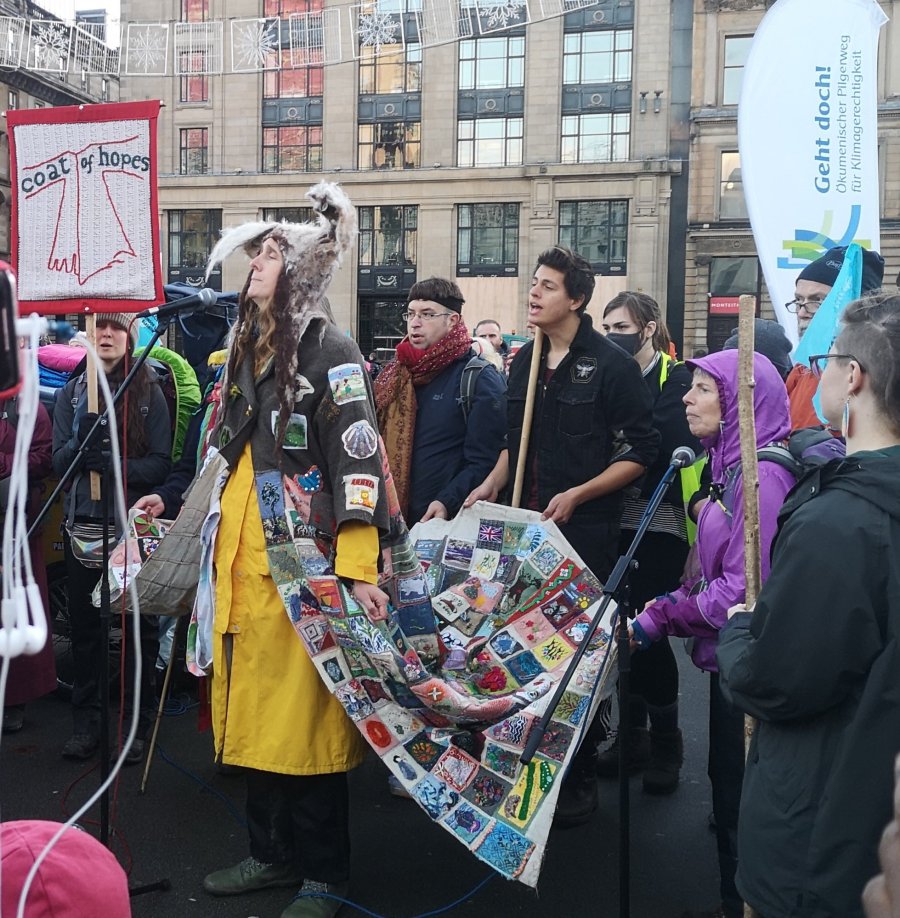
Pilgrimage is a journey of transformation, states their website, and that means change. It’s another hopeful statement. As I walk, I become clearer that it is a sense of respect for people, plants and animals that I hope for. Respect underpins the basic adjustment which needs to happen if we are to turn this crisis around. Respect is about listening and supporting, and that cannot be done by staying ‘at arms length’. The closer we get to others, the more likely we are to hear their needs and know what has to be done. That is part of the function of this pilgrimage, to move through towns and countryside and listen.
Peace Cranes
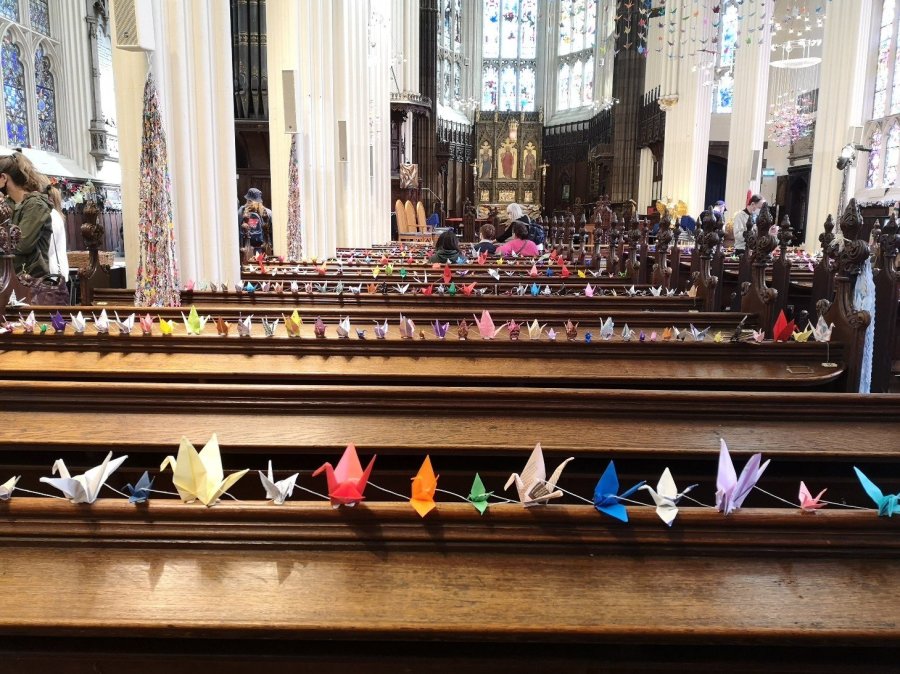
The Peace Crane project by artist Janis Hart was open for us to see in St John’s Church at the foot of Lothian Road. It consists of approximately 140,000 origami cranes (miniature birds) of peace and hope, made by people from all over the world. This vast number represents not only the people who were killed when the nuclear bomb was dropped on Hiroshima, Japan in 1945, but also those who lost their lives to Covid-19 and the many other-than-human species which are now extinct or endangered, such as the red-crowned crane.
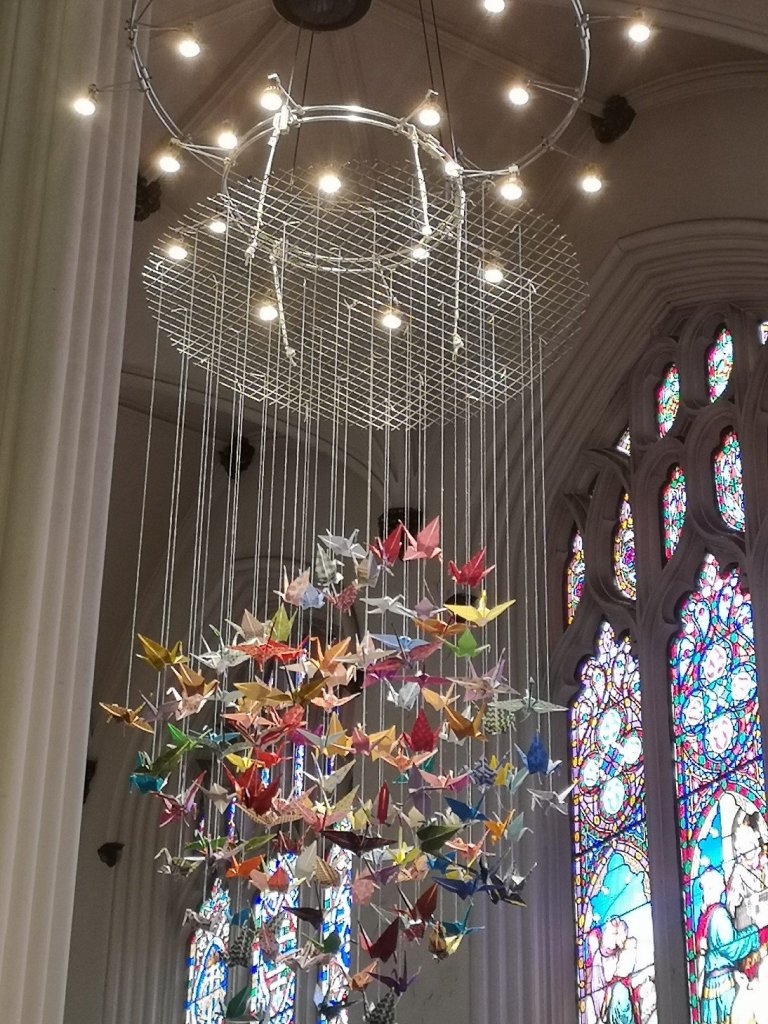
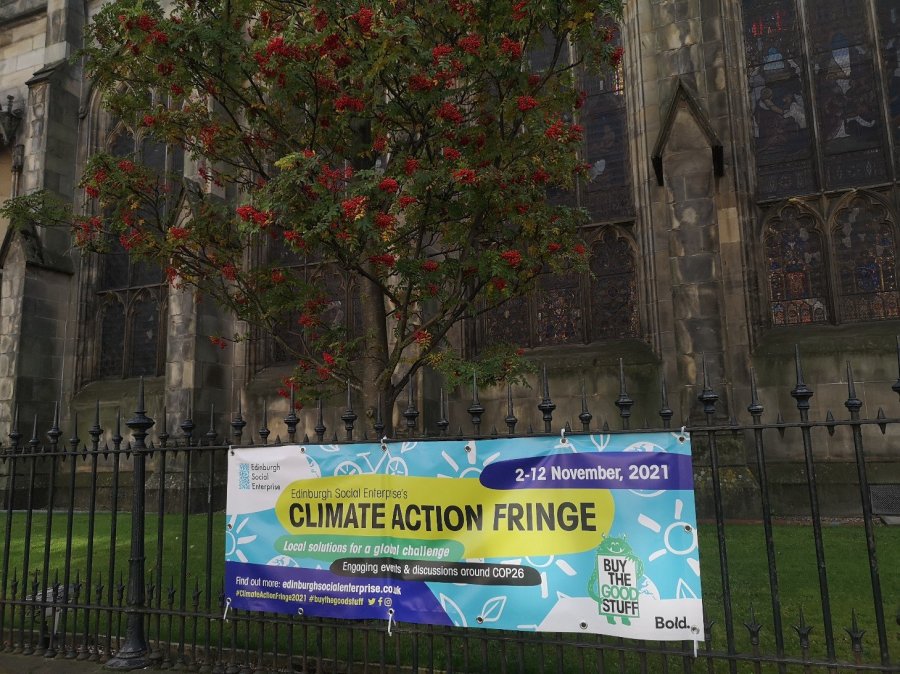
St Mary’s Episcopal Cathedral
The St Mary’s Cathedral Website
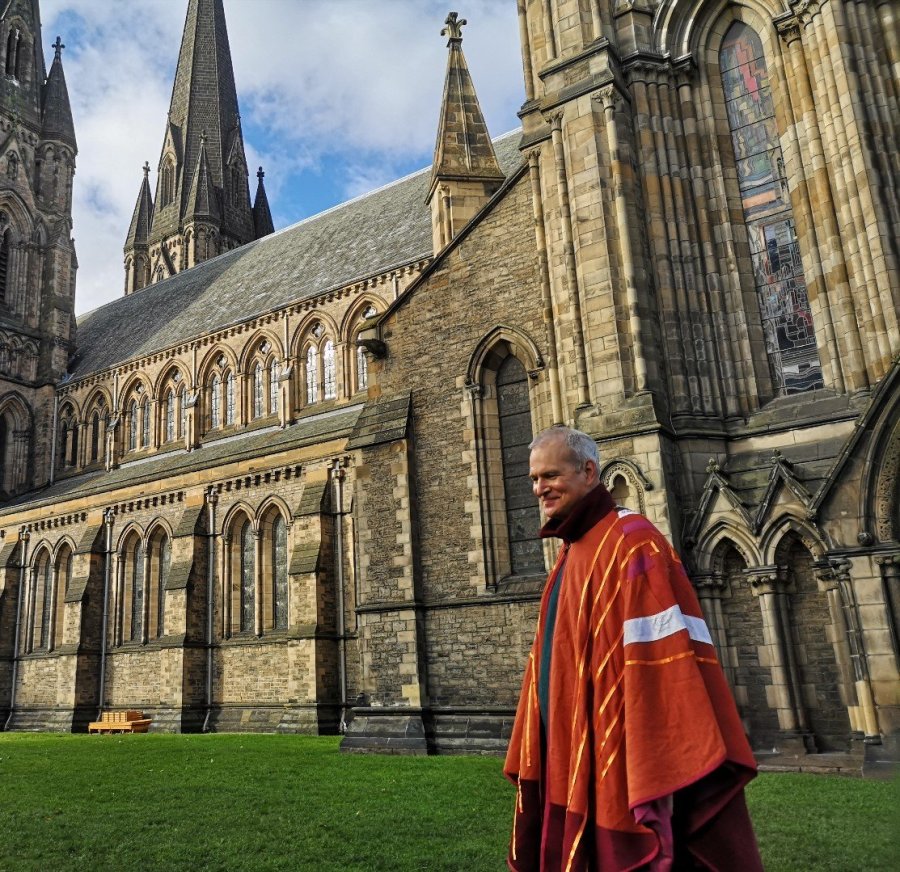
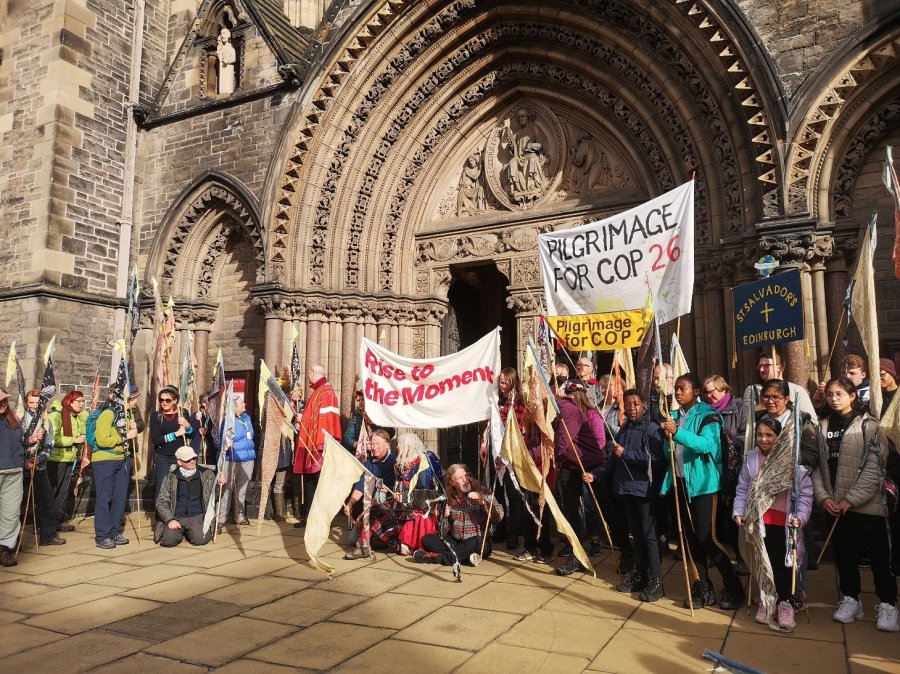
Fun fact: Did you know that the twin spires pf St Mary’s Cathedral are called Mary and Barbara? They are named after two women from the Walker family who funded the building of the Cathedral in the 1870s. (Thanks to Edinburgh Tourist for that information).
There is an afternoon of workshops including flag making with Ali Pretty of Kinetika (see above), and in the evening, a celebratory ceilidh. It isn’t possible to dance (what? no dancing at a ceilidh!) which is sad, but we are regaled with poetry, stories, a slide show, music, and eat fantastic food (thanks to Robin and co of the Ceilidh Collective). We are also shown the choir’s practice room which has paintings by Phoebe Anna Traquair.
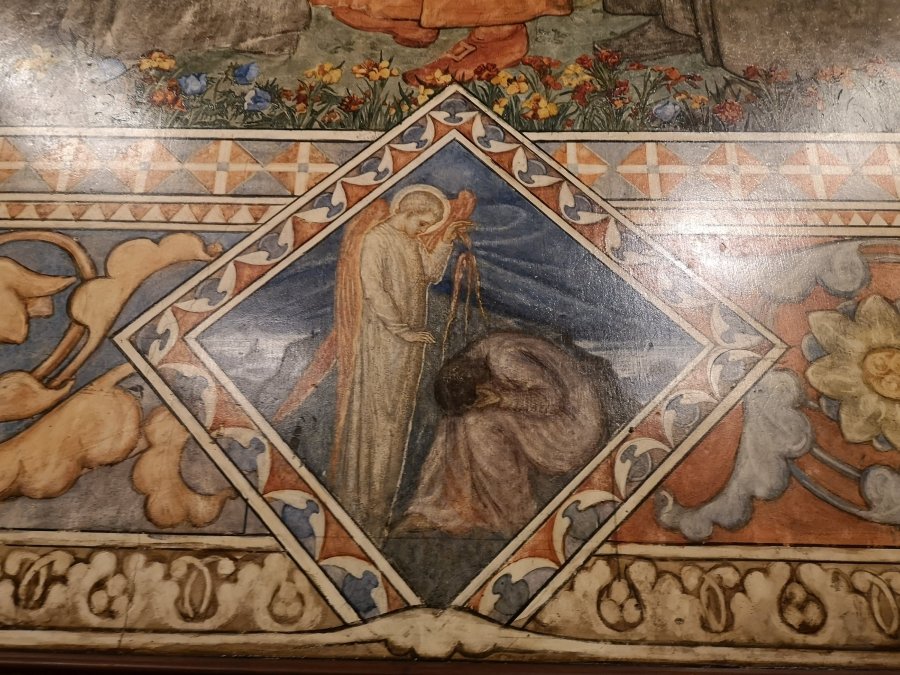
I know of the church at Bellevue (Mansfield Place) which is decorated with Traquair’s murals dating from the 1890s, and have seen exhibitions of her work at the Gallery of Modern Art, but the Choir is a hidden gem. It is a working space, the Provost proudly tells us, used for daily practice and so not ordinarily open to the public. Here is a procession of creation, of angels and church men interspersed with famous writers, artists and politicians of the artist’s time. Like our motley crew of pilgrims, they traverse the walls of the small room alongside birds and plants, and the work aims to take inspiration from sorrow, for the renewal of spirit.
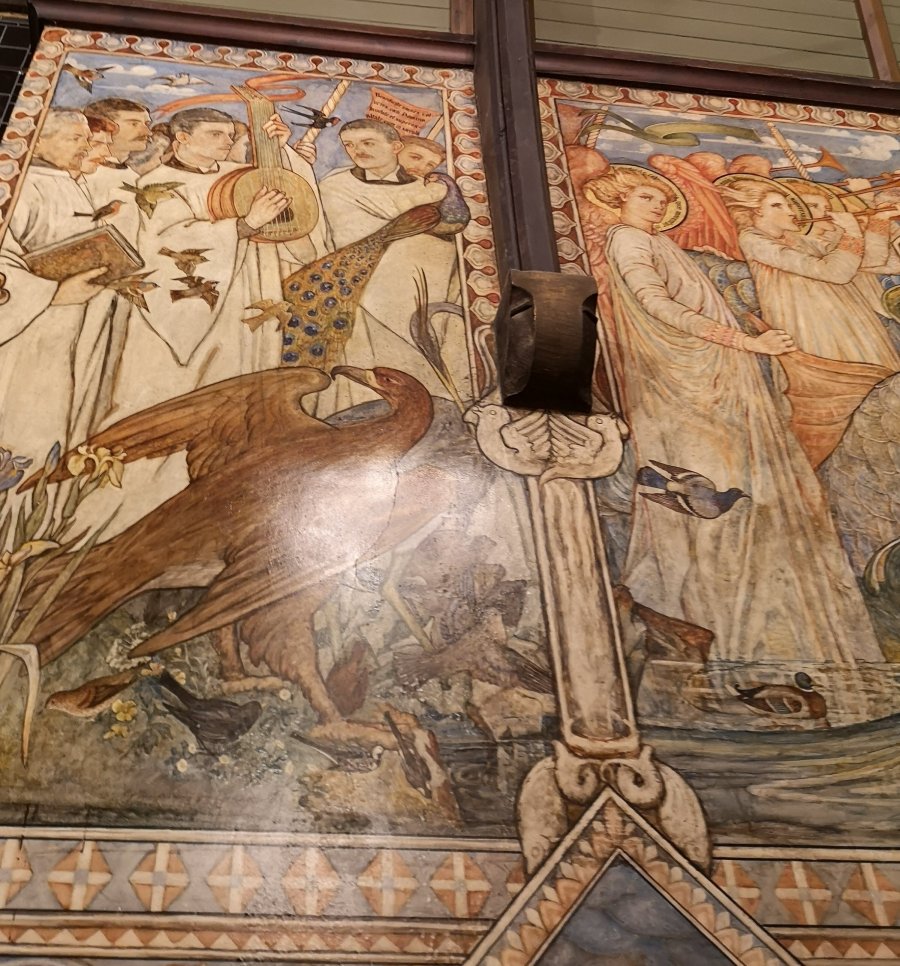
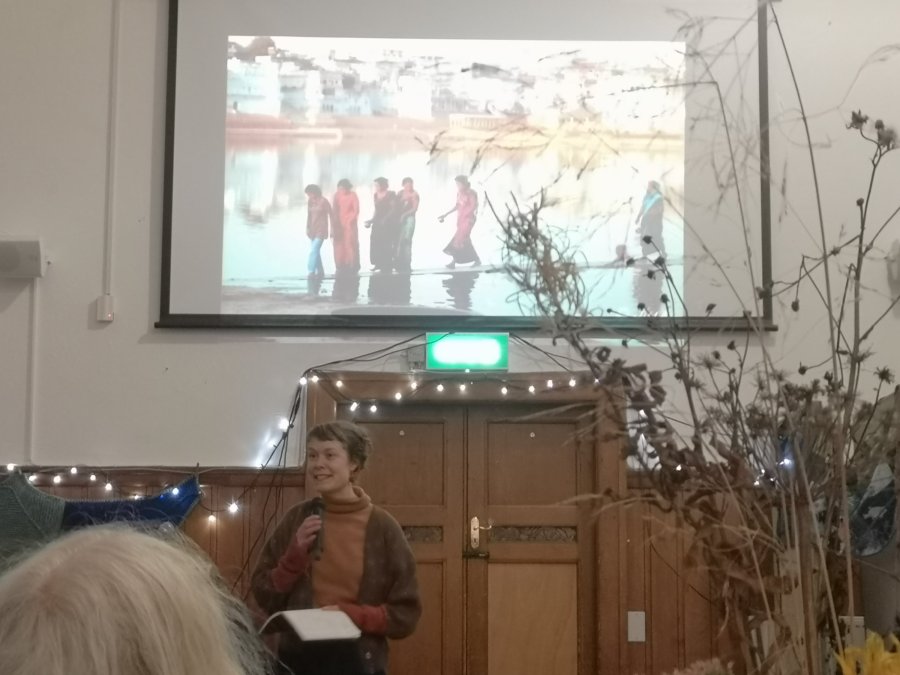
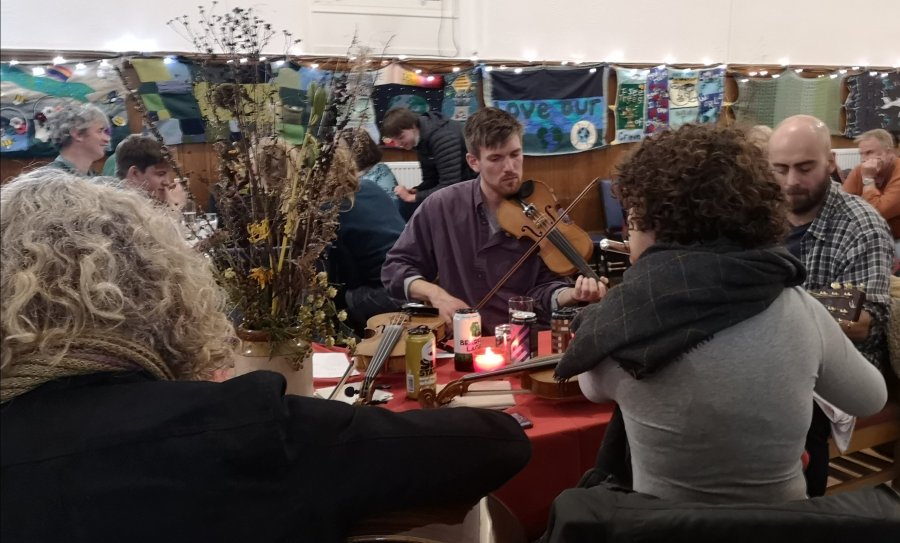
Silent Meditation at the Mound
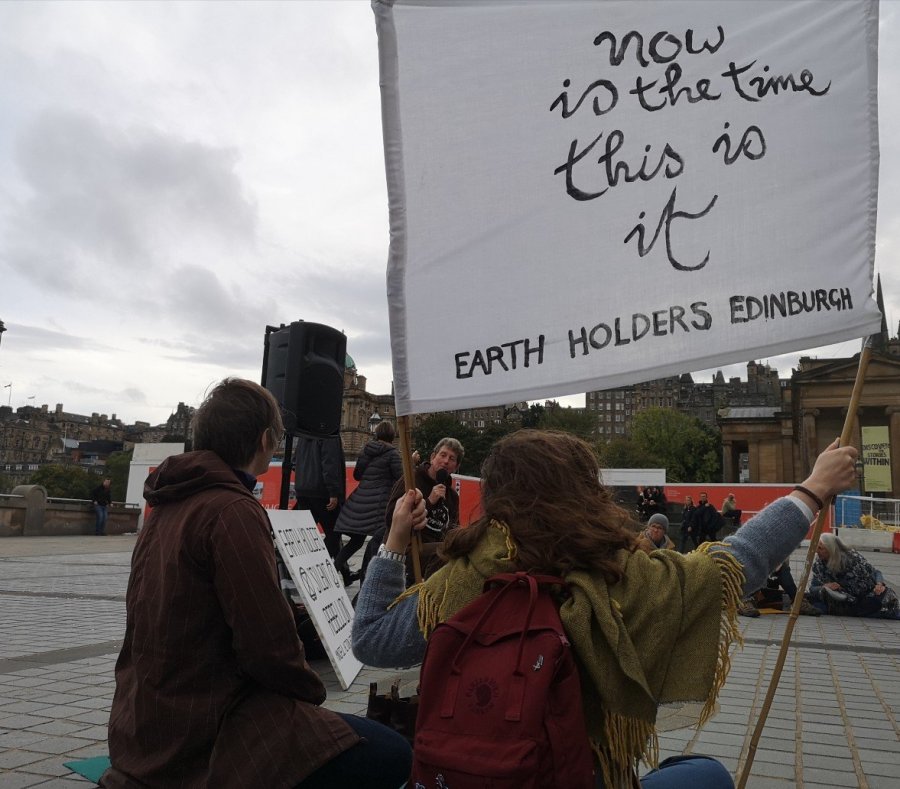
Run by Earth Holders Edinburgh (which organises new moon gatherings at the Salisbury Centre, Edinburgh) an hour of contemplation on Saturday is greatly needed. Despite the cold and noise, it is vital that we engage in reflection using a variety of different metgods. Silence and stillness is an equally useful opportunity to allow thoughts and internal activity to settle, in order to hear ‘the quiet voice’. It is during meditation that hidden ideas and impulses surface, where connections can be made.
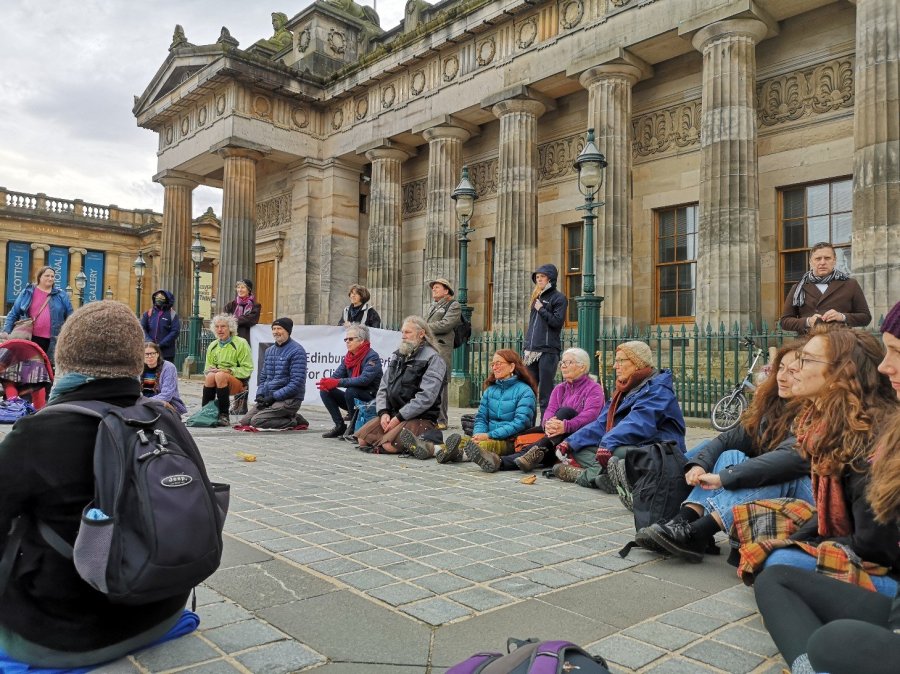
Inter-faith pilgrimage
For over thirty years, EIFA has diligently and effectively sought opportunities to cultivate and promote interfaith progress in the City of Edinburgh. During these three decades, EIFA has been continuously recognised by other interfaith organisations throughout the world as an outstanding role model and best practice in terms of developing and delivering positively impactful interfaith programmes for our wider community.
from the Edinburgh Interfaith Association website
Pilgrimage is often a walk which moves, like ours, across long distances, however that doesn’t have to be the case. Indeed, there was an increase in the number of stay-at-home pilgrimages developed during the Covid19 lockdowns – from walking around your garden to following a route online. Our afternoon one is organised by the Edinburgh Interfaith Community and takes us through the city – from New College where we listen to speeches from a Pagan celebrant (“To protect and restore the world’s biodiversity”), Ani Rinchen from the Kagyu Samye Ling Tibetan Buddhist community (“To continue to take responsibility for our actions. We will solve the problems, so we must look after our minds so that we can act wisely, and wisely elect our leaders”), and Jewish community leaders, among others, to visit the Baha’i community, the Hindu Mandir (“We are all the same, we all have the same nose, two eyes and a mouth” Neela Joshi), and various venues, ending at the Sikh Guru Nanak Gurdwara (“No one group, no one faith can do it alone.”) where we are treated so attentively and fed a delicious langar, a community meal which is prepared daily for anyone who needs it.
Deep Time Walk
On Sunday we go on a Deep Time Walk using the app below.
Deep Time Walk is a transformative journey through 4.6bn years of Earth history via a 4.6km guided walk. It is an invitation to view the world differently, encouraging positive action and advocacy for a regenerative Earth. Our vision is to empower an ensemble of geographically specific and culturally nuanced Deep Time Walks, providing a unique intercultural platform that helps bring about a diverse, flourishing ecological civilisation.
from the app page
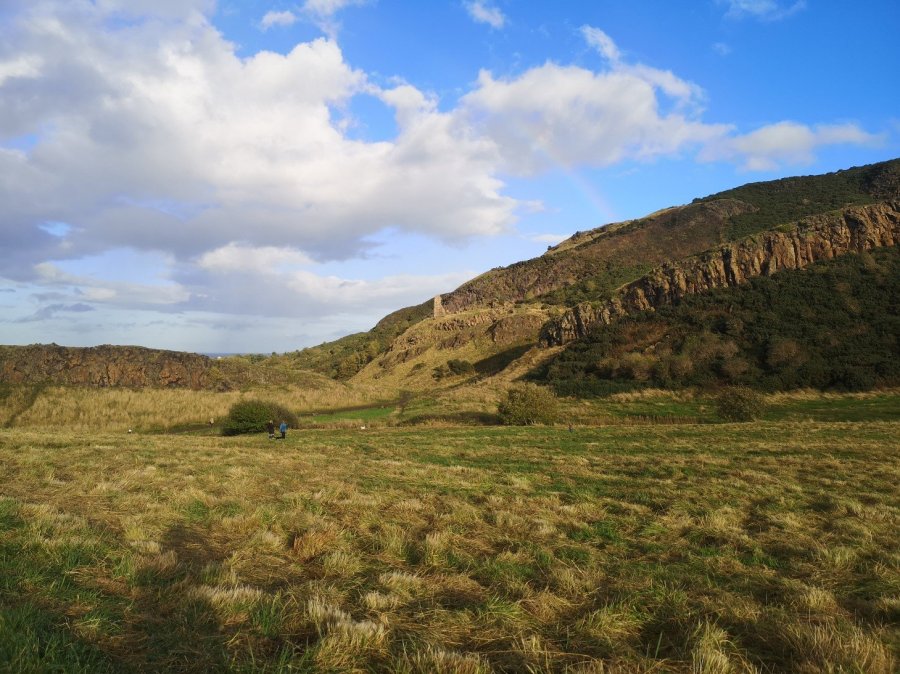
Quaker Meeting House – reflection
Our final Edinburgh experience is the Deep Time, Wonder and Grief Circle at the Quaker Meeting House where we were able to share our thoughts and feelings about our place in the deep time of things, our fears for the future, and sadness at the prospect that not enough is being done by government leaders and big-business owners. We were again treated to a generous meal by members of the Quaker community for which we were very grateful.
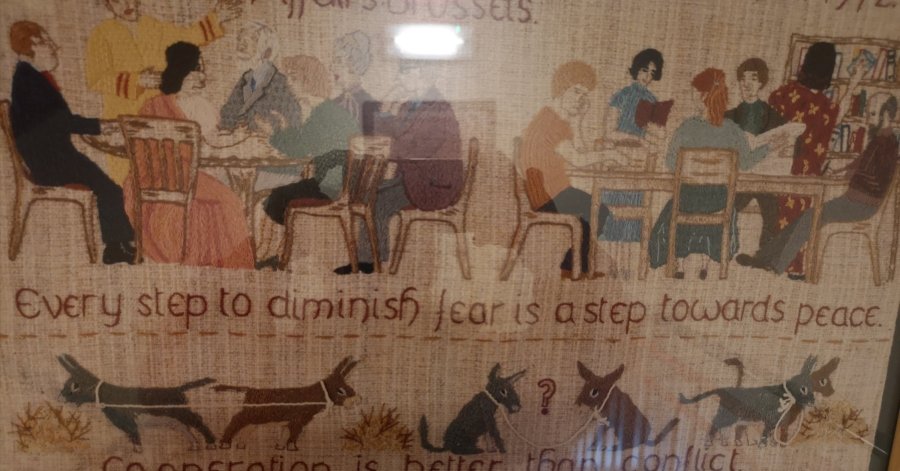
The violence at the heart of the system is something we need to address
Jonathan Baxter, Pilgrimage organiser
Thanks to all those who hosted and fed us, and to the St James community who organised house stays for some of us while we were in Edinburgh.

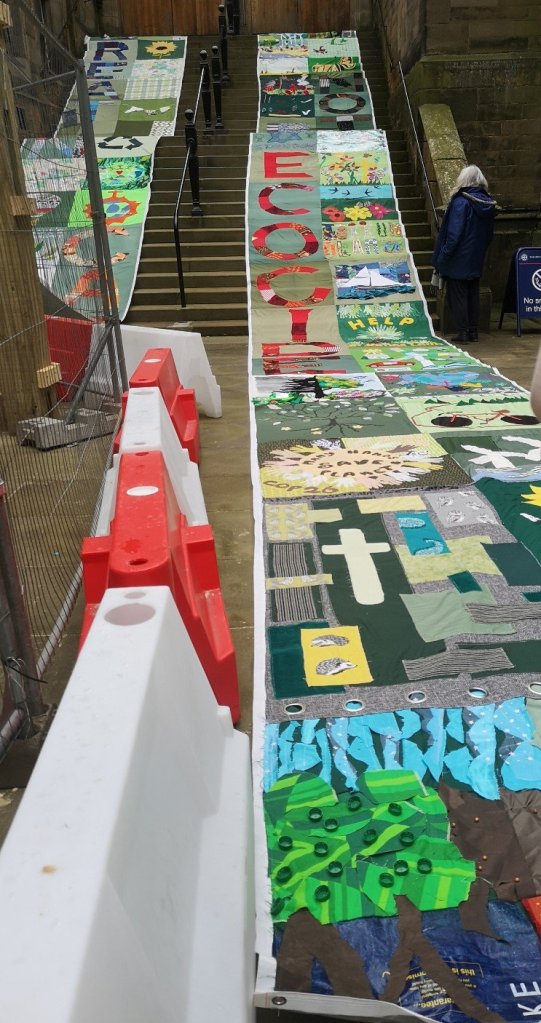
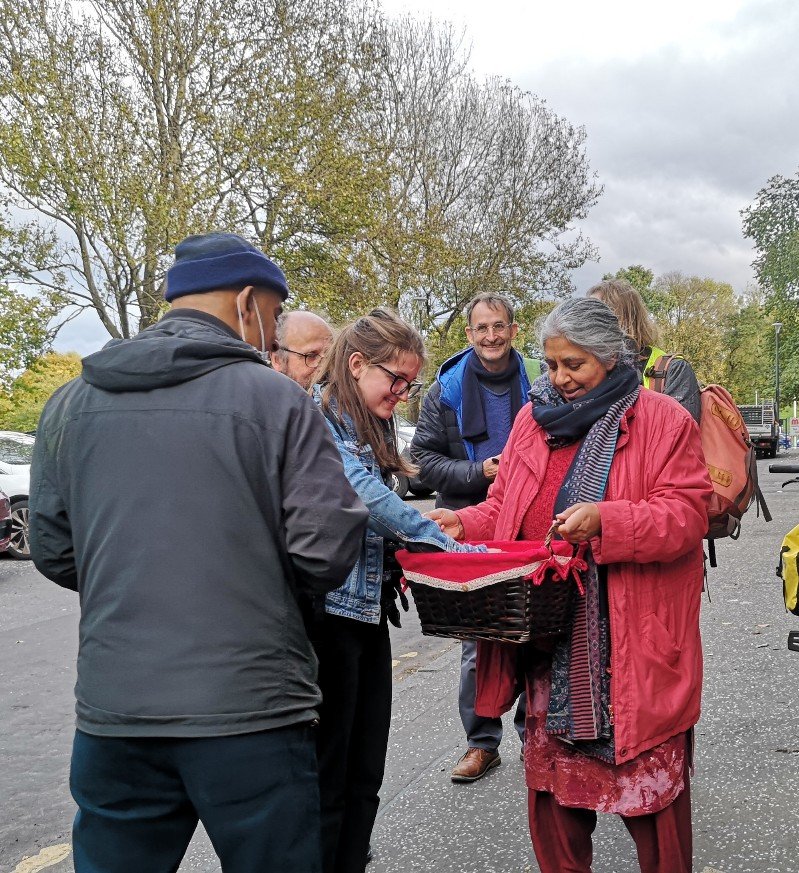
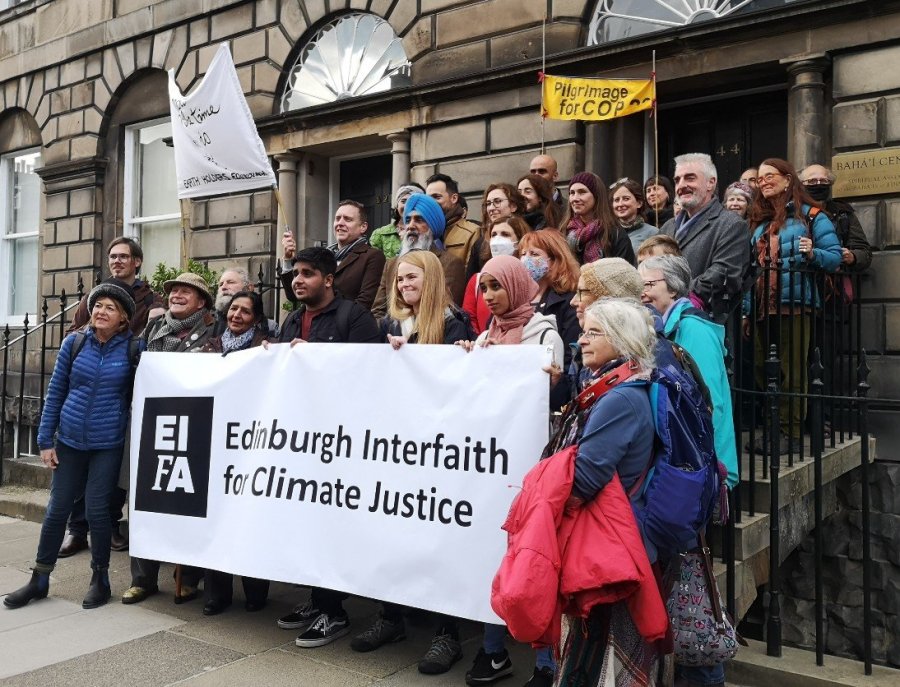
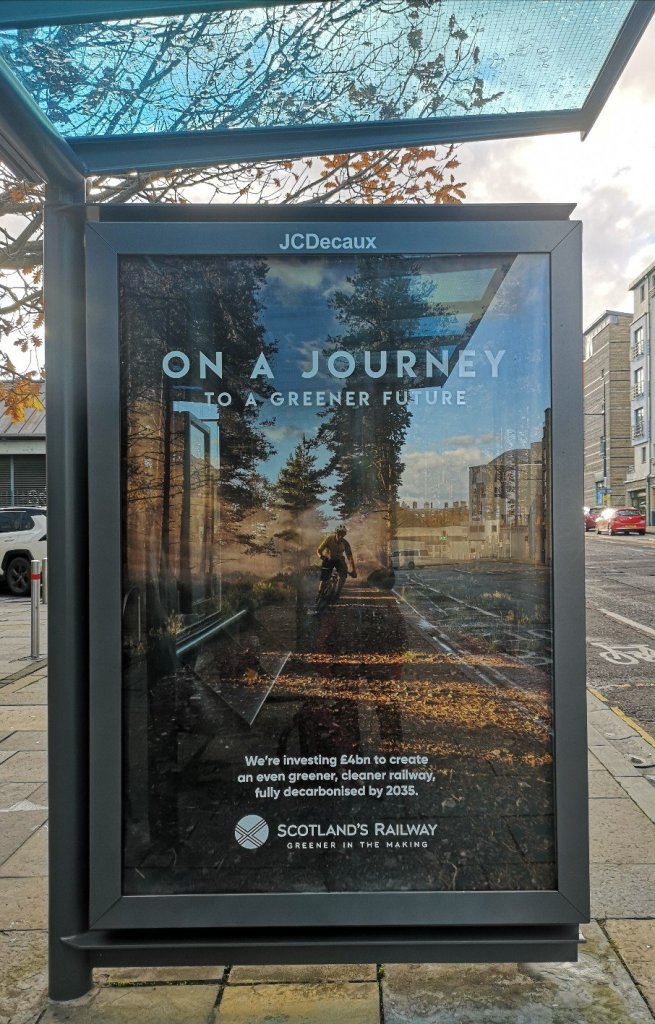
Thank you for reading. I am glad you enjoyed it.
LikeLike
Thank you for following this pilgrimage, Tamsin, and for describing your experiences so vividly.
LikeLiked by 1 person